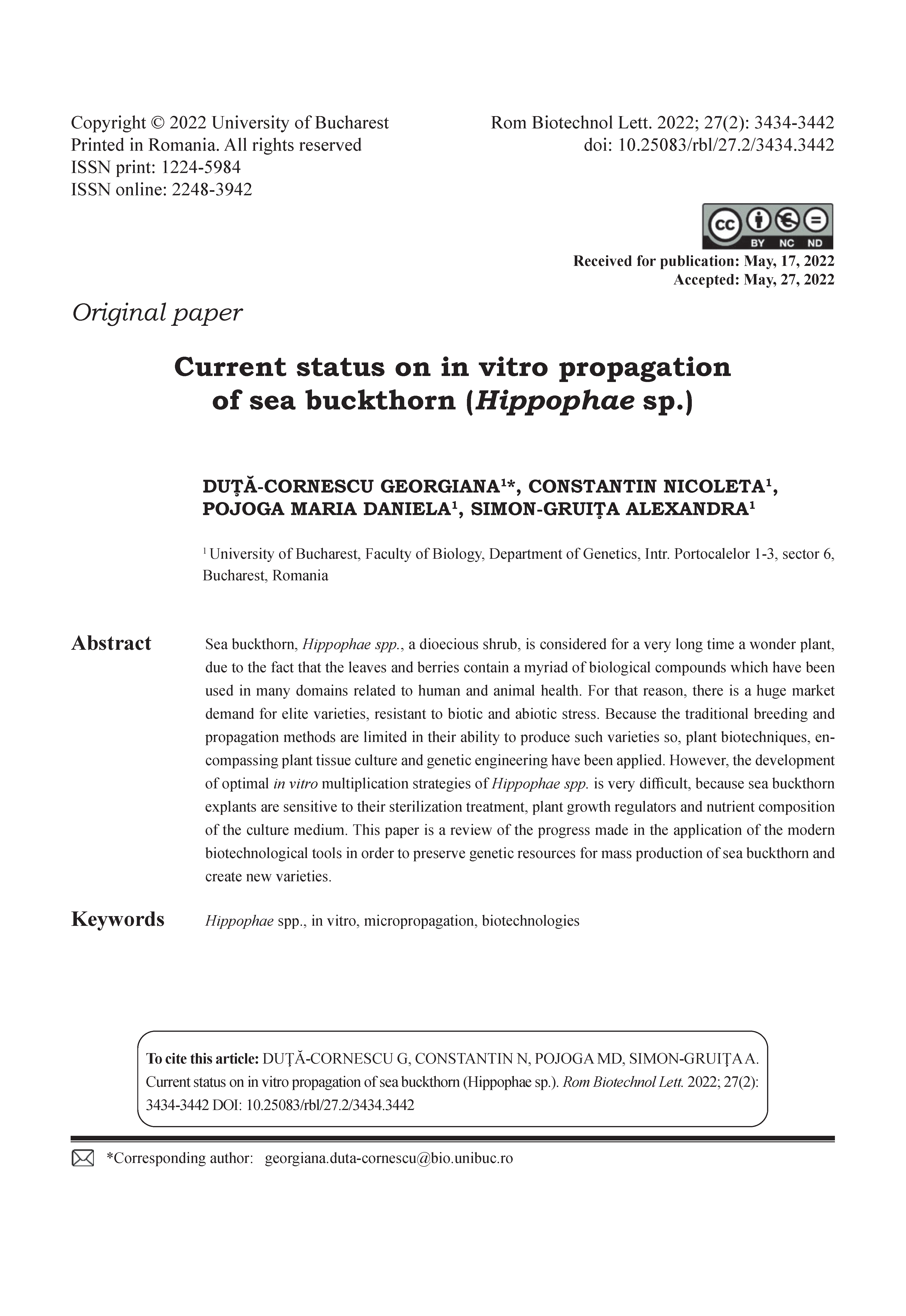Current status on in vitro propagation of sea buckthorn (Hippophae sp.)
DOI:
https://doi.org/10.25083/rbl/27.2/3434.3442Keywords:
Hippophae spp., in vitro, micropropagation, biotechnologiesAbstract
Sea buckthorn, Hippophae spp., a dioecious shrub, is considered for a very long time a wonder plant, due to the fact that the leaves and berries contain a myriad of biological compounds which have been used in many domains related to human and animal health. For that reason, there is a huge market demand for elite varieties, resistant to biotic and abiotic stress. Because the traditional breeding and propagation methods are limited in their ability to produce such varieties so, plant biotechniques, encompassing plant tissue culture and genetic engineering have been applied. However, the development of optimal in vitro multiplication strategies of Hippophae spp. is very difficult, because sea buckthorn explants are sensitive to their sterilization treatment, plant growth regulators and nutrient composition of the culture medium. This paper is a review of the progress made in the application of the modern biotechnological tools in order to preserve genetic resources for mass production of sea buckthorn and create new varieties.





